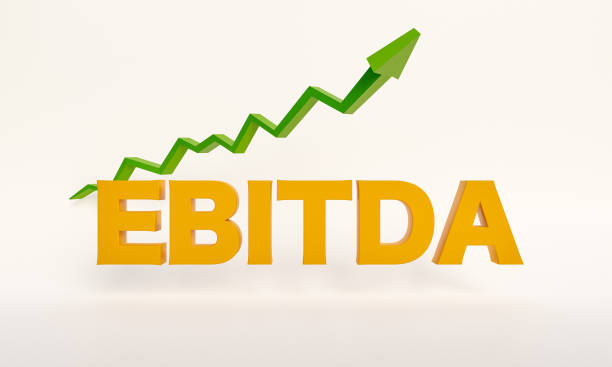EBITDA; What Is It and How to Use It in Businesses

EBITDA as a tool got prominent in the 1980s. At the time, the companies needed financial restructuring. However, investors would need the reassurance of the companies paying back the interest. So, they had to use EBITDA to calculate whether or not a company would meet its end of the deal; paying back its debt with the interest. So, what is EBITDA and how can you use it in businesses? Please read to get the answers to these and more.
What is EBITDA?
EBITDA is a short form for earnings before interest, taxes, depreciation, and amortization. It refers to the measure of the overall profitability or financial performance of a company. It is an alternative to the company’s net income, revenue, and earnings. However, what do the key terms in the name refer to? Let us find out;
- Interest; These are the expenses a business incurs due to interest rates on items such as loans from lenders and other financial institutions.
- Taxes; These are the federal taxes the state or local authorities in a region impose on a business.
- Depreciation; The reduction in the value of a company’s fixed asset.
- Amortization; A non-cash expense involving the cost of intangible assets. It is the process through which the initial value of an asset is gradually written off.
Read: How Voice Search is Transforming the Future of E-Commerce
EBITDA can estimate how much cash flow a company has. However, as much as the company may have capital investments such as property, and equipment, EBITDA does not reflect these. It is thus a misleading metric.
On the positive end, this measure shows precisely how a company is performing. Why? It shows its earnings before making the accounting and financial deductions.
Also, it gives a more accurate comparison of companies. Hence, you can use it to compare one company and one industry against the other. Therefore, owners of different businesses can use EBITDA to compare the profitability and performance of their business against that of their competitors.

Notably, the laws in the US do not require companies to disclose their EBITDA. However, since you can obtain the information from a company’s financial statements, working out the EBITDA is possible using the information.
Therefore, having found out that it is possible to use a company’s financial statements to calculate its EBITDA, what formula can you use? There are two straightforward formulas you can use. One of the formulas uses net income while the other uses operating income. The formulas are;
- Net income + Taxes + Interest Expense +Depreciation +Amortization.
- Operating Income + Depreciation and Amortization
In most cases, companies show their EBITDA when their net income is not quite impressive. So, when the company is not making any profits, its EBITDA comes in handy when investors want to evaluate it. This way, it keeps the real profitability and financial performance of the company away from the investors. Therefore, using a company’s EBITDA overshadows a lot.
How To Use EBITDA In Businesses?
Having known how to use the information in a business’s financial statement to calculate the EBITDA, what is its importance in a business? How can business owners use EBITDA? They can use in the following ways;
Read Business Valuation Calculator: Determine Your Business Market Value
- When determining the value of a business or company. Thanks to EBITDA, a business owner gets an idea of what the value of his business or company is.
- It helps in demonstrating a company’s worth. Some potential buyers and investors may be interested in buying or investing in a company respectively. With the EBITDA, these parties can have a clear picture of whether or not the business has some growth potential. So, a business owner can use the business’ EBITDA to either sell the business or attract investors.
- Comparing the business’ profitability or overall performance with its competitors in the same industry. The competition among a variety of businesses is continually growing. Thankfully, EBITDA makes the analysis of their profitability a lot easier. It is one of the most accurate ways of making a comparison. Such data can be utilized by business owners, the government, investors, and even analysts. This way, businesses, companies, and the stakeholders involved can utilize the information in making some important decisions in the businesses.
- A business can use EBITDA as an alternative for cash flow. It can show whether a company can generate cash flow or not.
- If a business wants to make its earnings appear larger than they actually are, it can use EBITDA.
Advantages
- It is more flexible compared to net income.
- Companies can use it as a distraction for other problems in a financial statement of a business. This way, the investors will most likely not see the other faults in their financial statements.
- EBITDA helps determine whether or not a business will be able to pay back its debt and interest.
Read: Frozen Account; What to Do After your Business Account is Frozen?

Disadvantages
- IFRS or GAAP do not recognize it.
- Its calculation varies from one company to the other.
- Some are sceptical of using it.
- It can mislead investors in cases where a company prominently uses it compared to in the past. It can be a way of covering up some problems in the financial statement.
- EBITDA does not consider the cost of assets such as equipment and property.
- Leaves out the working capital.
- It can be unreliable because different figures represent different companies’ starting points.
- It may not bring out the actual value of a company. Unfortunately, EBITDA can make a company seem less expensive than it actually is.
Conclusion
EBITDA is a valuation metric used to measure a business or company’s financial performance or profitability. Also, it can be presented to the investors, especially when the profits of a company are not so pleasing. Therefore, business owners can calculate their business’ EBITDA to know their profitability and any potential growth opportunities they may be having. However, keep in mind that there are certain drawbacks associated with EBITDA e.g. a lack of bringing in the actual value of a company, not considering the cost of fixed assets, and the possibility of misleading the investors.
Other articles you might be interested in:
Small Business Accounting 101: Basics, Set Up and Requirements




